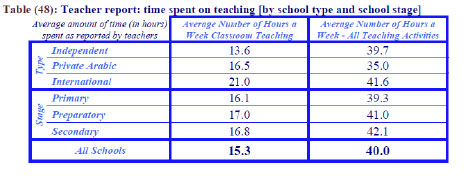The systematic dismantling of one country’s public school system in favor of privatized, for-profit schools demonstrates the impact on educational quality, learning, learners and families.
The movement to privatize schools
Many politicians in the United States have advocated for various forms of privatization of public schools ranging from charter and magnet schools to creating a voucher system to outright dismantling of the American public education system (Cavanagh, 2011). “For 20 years, a top priority item for ALEC [American Legislative Exchange Council] has been the privatization of public schools through a school voucher system” (Bottari, 2011, np). Privatization in the context of this article is defined as any individually or corporately-owned school and/or schools operating outside of governmental educational regulations pertaining to the curriculum, materials, teacher qualifications, and/or services provided. Magnet schools are one example of schools which can evade governmental educational rules and guidelines. Vouchers, an approach to privatization, are a way for wealthy individuals to apply their taxes to pay for tuition to a private school instead of the public school system. Two Midwestern cities, Cleveland, Ohio and Milwaukee, Wisconsin already employ a school voucher system (Sisson, Zacher & Cayton, 2007). Several Midwestern states are considering implementation of a voucher system or widening implementation, including Michigan and Wisconsin respectively (Kelly, 2014). Similar to vouchers are educational tax cuts, which have been proposed in Illinois, Iowa and Minnesota (Greco, 2003). According to the Rand Corporation, “Vouchers and charter schools both represent the leading edge of the movement to promote parental choice in education, and they present similar challenges for the traditional system of government-operated schools” (2001, np). Proponents cite public schools’ failures to prepare students to be competitive on standardized tests, dropping rates of literacy, and fewer STEM majors (Fensterwald, 2013; New York Times, 2013). They believe that free-market competition will improve the quality of education while reducing the cost (Walker, 2012).
Public school educators and advocates, on the other hand, claim that public schools are overcoming obstacles and preparing an increasingly diverse student body on a wider range of material than in the past while supplementing for the lack of community and parental engagement in students’ lives (Berliner & Biddle, 1995; Berliner & Glass, 2014). Ravitch (2013) argues, “Public education is not broken. It is not failing or declining. The diagnosis is wrong, and the solutions of the corporate reformers are wrong. Our urban schools are in trouble because of concentrated poverty and racial segregation. But public education is not “broken”. Public education is in a crisis only so far as society is and only so far as this new narrative of crisis has destabilized it.” (Chapter 1: Our Schools are at Risk, paragraph 8).
In spite of these arguments and evidence to support the advocates’ positions, politicians continue to “starve” public schools by reducing their funding (Borosage, 2011; Meegan, 2013; Underwood, 2011). Educators bemoan the reductions in funding noting that without sufficient staff, materials and infrastructure, schools are being set up for failure.
If the American public understood that reformers want to privatize their public schools and divert their taxes to pay profits to investors, it would be hard to sell the corporate idea of reform. If parents understood that the reformers want to close down their community schools and require them to go shopping for schools, some far from home, that may or may not accept their children, it would be hard to sell the corporate idea of reform. If the American public understood that the very concept of education was being disfigured into a mechanism to apply standardized testing and sort their children into data points on a normal curve, it would be hard to sell the corporate idea of reform. (Ravitch, 2013, Chapter 4: The Language of Corporate Reform, paragraph 10).
Americans may not realize that another, little country in the Middle East has experienced the effects of public school privatization. This article describes the systematic dismantling of one country’s public school system in favor of privatized, for-profit schools. The current state of the school system, the learning outcomes, and the struggle to gain admission to a decent school are outlined based on educational research, newspaper articles, governmental and non-governmental organizations (NGOs) statistics and reports, and personal accounts. The educational quality and opportunity for learners who are non-native speakers, have special needs or do not perform well on standardized tests is discussed as well as the potential impact on schools in the Midwest.
Cautionary tale
Starting in 2001, the Rand Corporation began serving as an educational consulting team for the Qatari Ministry of Education (Brewer, Augustine, Zellman, Ryan, Goldman, Stasz & Constant, 2007). The Rand Corporation developed a comprehensive plan to reform the Qatari educational system by privatizing all of the public schools, and eliminating the Ministry of Education in favor of a Supreme Education Council (Brewer et al., 2007). The former public schools were transitioned into for-profit “independent” schools with less oversight and regulation than the former public schools (Brewer et al., 2007; Zellman, Constant & Goldman, 2011).
“RAND offered Qatari leadership three governance reform options, ranging from a modified version of the current centralized system to a completely decentralized system of tuition vouchers provided to parents to use at any school. The Emir made the middle choice, selecting a decentralized charter-school-like system with independently-operated, governmentally-funded schools.” (Zellman, Constant & Goldman, 2011, p. 33).
The principles underpinning the new independent schools were:
- Autonomy in direction, curriculum, and management;
- Accountability through audits and reporting;
- Variety with diverse schooling options; and
- Choice of schools from a limited set of options
(Zellman, Constant & Goldman, 2011).
For a total population of 2.17 million (Kovessy, 2014), 126 independent k-12 schools were created in Doha in comparison to the 38 community schools, 120 international schools, and 69 semi-independent schools.
In the case of Qatar, privately owned schools may be small organizations owned by a group of shareholders looking to make a profit. According to one parent, “Private schools in Doha are like mushrooms, popping up all over the place with no guidelines or structures. Parents are so desperate to get their children into a school that they disregard even their health and safety” (“Denise”, personal communication, September 20, 2014).
After 10 years, Qatar’s independent school students continued to perform below average in international comparisons on the Programme for International Student Assessment (PISA), which measures 15-year-olds’ performance on reading, science, math/ problem solving and financial literacy. According to the PISA 2012 reports Qatar’s was ranked 62nd out of 65 participating countries. Students were advancing through grades without foundational skills necessary for academics at the next level. According to the Supreme Education Council (2012-13), the percentage of students meeting standards for various fields at graduate is quite low (Figure 1). The areas where fewer students were meeting standards included foundational language and math: Arabic, English, Math and Social Studies.
| Subject | Percentage Meeting Standards | Percentage Approaching Standards | Percentage Below Standards |
| Arabic | 16% | 38% | 46% |
| English | 20% | 22% | 58% |
| Mathematics | 19% | 27% | 54% |
| Science-Biology | 40% | 28% | 32% |
| Science-Chemistry | 24% | 26% | 50% |
| Science-Physics | 44% | 22% | 34% |
| Islamic Studies | 29% | 25% | 46% |
| Social Studies | 19% | 35% | 46% |
(Supreme Education Council, 2012-13, p. 24).
Learners began arriving at the university level without the ability to add, or write academically in English or Arabic (M. Chabi, T. Tillman, C. Denekamp, D. Moran, personal communication, 2013-14). According to the Supreme Education Council’s Education in the Schools of Qatar Report, only 64% of independent k-12 teachers are satisfied with their learners’ prior subject preparation (2012-13). The same report noted hours of instruction on the week averaging only 15.3 hours (see Figure 2).

The educational system in Doha quickly became negatively competitive for families and children. With the independent schools failing, families turned to privately-owned international schools, where the reputations were glowing, but the competition for admissions was fierce (Scott, 2014, March). Students, despite native language, were pre-tested for admission to international schools with questionable assessment instruments geared toward admitting only the intellectually elite or well-connected children. Those children with language learning challenges or special needs the schools would have to serve were considered a problem as the private schools would have to hire professionals to meet their needs (M. Mitchell, personal communication, August 5, 2014). Also, if the child did not perform well, she/he would reflect negatively on the reputation of the school (M. Mitchell, personal communication, August 5, 2014).Therefore, these children rarely were accepted into the higher quality schools.
Challenges with the quality of the private schools
Private schools are not necessarily an uncomplicated salve for the problems plaguing public schools. According to parent F. Abousalham, the litany of problems and challenges being experienced in the independent and international schools include,
The education quality in Doha, Qatar from Kindergarten through High school is very low except some schools such as school X and school Y (names redacted). I hear stories almost every day from my son who is in year 5 and from many colleagues whom their kids also go to many independent and international schools. I hear things like,
- Many kids in year 4 or 5 cannot speak or make a correct sentence in English.
- Everyone pass the academic year and move to the next level.
- Kids smoke in school in hidden area at the age of 12 year old.
- Many parents don’t know which grades their children are in.
- Many kids suffering from BULLYING.
- Students’ behavior is very bad: they lie, they cheat, and they have no respect toward their teachers and others.
- The most important thing for school is to receive their payment on time.
(personal communication, September 28, 2014)
Another parent tells her story of the challenges of obtaining a reasonably reliable, decent quality education for her child.
“Last year, my 9-year old daughter needed to take a bus for 3 hours to/from school daily to attend the only international school that we could gain admission to. The kids on the bus were stir crazy and out of control. My daughter was exhausted getting up at 4am to catch the bus at 5am and returning home at 3pm. I needed to make a change.
I found another school with open admissions which was new, growing and closer to my home. My daughter and I toured the facility, but they indicated they were in the process of moving to a newer facility with more space. I interviewed the British Principal and met the British, licensed teacher; both seemed qualified and professional. My daughter was tested for admission and was accepted. She began at the new school the following week.
All went smoothly for the first two months, with the exception that the teacher was very strict and the instruction seemed traditional. By traditional, I mean rote-memorization of spelling words, direct instruction, little discovery/inquiry learning, and very little engagement. This situation was nothing in comparison to what we were in for….
Everything went awry after the winter break though. The Principal was gone; she wasn’t able to get her governmental paperwork approved. The teachers were all released. A whole new team of Indian teachers without k-12 licensures were present. There was no schedule, no curriculum, no organized lessons, no books, no clear assessments, and no plan. The entire curriculum consisted of daily worksheets with topics that did not necessarily connect.
I attempted to work with the teacher. One day, I had this conversation. “Hi. I’m Sojourner. How’s my daughter doing on her reading?” “Hi. I’m Nazeen. I’m working with her on her literature.” “Literature? You mean literacy, right? You’re teaching her to read, right?” “Right, I’m working with her on her literacy.” “Literacy or literature? Which one are you teaching her?” “Literature. I’m working with her on her literature.”
Clearly, I needed to be a stronger advocate for my child. I spoke to the new Principal only to discover she was an administrator with an MBA and no teaching qualification or experience. I sought other schools. I applied at 4 other schools, each application consisted of as many as 14 different forms and documentation. My daughter had to miss school to be assessed at the schools. At each school, she did not pass the tests, because she’d been in this poor school. So she was not accepted. She is stuck at a chaotic and unprofessional school now. I can’t get her accepted into a better one. I now teach her daily at home after school/work.
(personal communication with Sojourner, September 19, 2014)
This is one experience that highlights many issues in quality of private, for-profit schools. First, the quality of teachers is suspect and variable. Without regulation, private schools can hire anyone they choose; these teachers may or may not have a solid educational background themselves or a university degree. Specialists with knowledge of areas, such as English as a Second Language (ESL), Reading Specialists or Special Education may not be on staff.
Second, the administration of private schools is not stable. The school’s board of directors may choose not to fund the school, so books, technology, equipment, etc. may not be provided, adequate in quality or quantity, or current. The school’s board of directors may fire all the teachers, administrators and staff. They might not provide a sufficient number of personnel for the school.
Third, the quality of assessments is dubious. Children are evaluated for admission and progress on assessments that lack validity and reliability. Unless a school purchases an achievement exam from a testing company, such as Educational Testing Service (ETS), the high-stakes assessments used admission and progress are designed by the teachers who are ill-prepared in test design and psychometrics to develop valid and reliable measures. It is fair to say that the tests of classroom progress are often designed by teachers or adopted from textbook supplemental materials. Furthermore, the admissions are based on these questionable admissions tests. And the admissions rates are extremely exclusive. “The average person has a 7/100 chance of being accepted by Harvard University according to the 2013 admission rate. Our three year old, however, has a 0/6 acceptance rate thus far for Pre-K 4 in Qatar.” (Moha_Doha, 2014, np).
Fourth, the washback on children and stress for families is overwhelming. Children experience different teachers, changes in schedules, lack of a cohesive curriculum, lack of textbooks, and failure to pass an assessment to be admitted to certain schools. These experiences have lasting psychological, developmental and educational impact on the children. For example, as teachers are shifted between classes, when there is no curriculum or textbooks to guide the course of the learning, children receive haphazard information. They may be taught fractions for one week and division the next using different methods and practices. The gaps in their education cannot be calculated. Psychologically, they may blame themselves for not being admitted to a school, they may suffer bullying physically or emotionally and the resultant emotional traumas, or they may act out as the authority and classroom management are unstable.
For families, the instability, the worry for their children and the chaos of the systems breed unrest and fear. Parents worry about their children’s education and emotional well-being, while trying to support them in the process. Many families end up hiring private tutors.
Conclusion
In 2013, the RAND Corporation was “disinvited” to continue its work with the Qatari government due to the poor performance of the independent schools. The general consensus is that the privatization of the public schools failed in Doha (Ahmed, 2013, March). This failure led to an increased demand on private, international schools; Schools that cannot keep pace with demand (Scott, 2014, April). The toll on families is high due to the time demands and costs of submitting numerous applications for admission to all schools, the stress of pre-admissions assessments, and the pressures of waiting lists. Some families do not succeed in finding space for their children in the schools.
Privatization of public schools in the U.S. would also cause children and parents an inordinate amount of stress in search of a good quality school for their children. When families are not enfranchised or knowledgeable about the system, such as many non-native speaking parents, they may lack the financial, personal or linguistic wherewithal to obtain admission to a high-quality school. If the children have needs outside of the traditional (e.g., special needs, reading delays, learning challenges, second language learners/ELs), access to quality schools with highly-qualified teachers is also a formidable challenge.
Privatization inevitably means deregulation, greater segregation, and less equity, with minimal oversight by public authorities. Privatization has typically not been a friend to powerless groups” (Ravitch, 2013, Chapter 6: The Facts about the Achievement Gap, paragraph 2).
Imagine for a minute what would happen in Minneapolis, Madison, or Chicago, let alone small towns, if voucher schools became prevalent. Many rich, white families would withdraw their taxes from the pool of funds for public schools, leaving a great deal less funding for those remaining. The available spots in private schools would become even more competitive and exclusive than they already are. The minority children who are supposed to be served by vouchers as a means of entering private schools (Rand, 2003), would experience more rigorous and exclusionary admissions testing. English language learners’ families who may not have the linguistic abilities to navigate the voucher system and private school admissions process would not have equitable access. It would be those children who are less fortunate who would remain behind in the public schools. The public schools would shrink in population and staffing. Many teachers would lose their jobs as the funding would be further reduced. The public schools would have even less academic success as a result of the higher achieving students’ departures. Ultimately, the voucher system would lead to the dismantling of public schools at worst or a two tiered system enfranchising only the wealthy and empowered. We have seen in Qatar’s example that private schools do not automatically equate with high quality education; actually, the lack of regulations and over sight are rife for misuse of funds, instability, and chaos. Without the public schools serving as a means for all people to obtain an education, the impact on our Midwestern communities and families would be extremely negative as well.
The American public schools may have challenges, but they are free, accessible and serve all learners who arrive at their doorstep. Educators should continue to strive for high quality education for each child through sustained school improvement. However, educators must also advocate for the public school system in order to serve all learners in an equitable and unbiased manner. Having lived the Qatari school experience, I look forward to reenrolling my child in the Eau Claire (WI) Public Schools.
References
Ahmed, A. (2013, March). Are Qatar’s independent schools broken? An in-depth report. Doha News. Retrieved on September 24, 2014 from http://dohanews.co/are-qatars-independent-schools-broken-an-in-depth/
Berliner, D. C., & Biddle, B. J. (1995). The manufactured crisis: Myths, fraud, and the attack on America’s public schools. New York: Addison-Wesley.
Berliner, D. C., & Glass, G. V. (2014). 50 myths and lies that threaten America’s public schools: The real crisis in education. New York: Teachers’ College Press, Columbia University.
Borosage, R. (2011, October). Starving America’s public schools. Nation of Change. Retrieved on September 22, 2014 from http://www.nationofchange.org/starving-americas-public-schools-1318561153
Bottari, M. (2011). ALEC bills in Wisconsin. The Center for Media and Diplomacy’s PR Watch. Retrieved on September 22, 2014 from http://www.prwatch.org/news/2011/07/10880/alec-bills-wisconsin
Brewer, D. J., Augustine, C. H., Zellman, G. L., Ryan, G., Goldman, C. A., Stasz, C. & Constant, L. (2007). Education for a new era: Design and implementation of K-12 education reform in Qatar. Santa Monica, CA: Rand-Qatar Policy Institute.
Cavanagh, S. (2011). State GOP lawmakers push to expand vouchers. Education Week. Retrieved on September 22, 2014 fromhttp://www.edweek.org/ew/articles/2011/04/27/29vouchers_ep.h30.html?tkn=LZTFvViFvXJVUir23AzkMQldmbo%2B9YAn90x7&cmp=ENL-EU-NEWS1
Fensterwald, J. (2013, December). U.S. scores stagnant, other nations pass us by in latest international test. EdSource. Retrieved on September 22, 2014 from http://edsource.org/2013/u-s-scores-stagnant-other-nations-pass-by-in-latest-international-comparison/52052#.VB_1ufmSxZg
Greco, J. (2003). School choice supporters poised for a new legislative push in state capitols. Firstline Midwest, 10(1), 1-4.
Kelly, R. (2014, January). State rep. Tim Kelly: Expand vouchers to include private, parochial schools. Detroit Free Press. Retrieved on September 28, 2014 from http://www.freep.com/article/20140103/OPINION05/301030012/school-vouchers-michigan-private-expansion-education
Kovessy, P. (2014, September). ‘New wave’ of expats arriving in Qatar, says QNB report. Retrieved on September 22, 2014 from http://dohanews.co/new-wave-expats-arriving-qatar-says-qnb-report/
Meegan, T. (2013, July). CPS starving its schools to justify privatization. Chicago Sun-Times Retrieved on September 22, 2014 from http://www.suntimes.com/news/otherviews/21628237-452/cps-starving-its-schools-to-justify-privatization.html
Moha_Doha. (2014, March). Getting into Harvard is easier than kindergarten in Qatar. Retrieved on September 28, 2014 from http://www.mohadoha.com/page/7/
New York Times, Editorial Board. (2013, October). The United States, falling behind. New York Times. Retrieved on September 22, 2014 from http://www.nytimes.com/2013/10/23/opinion/the-united-states-falling-behind.html?_r=0
Rand Corporation. (2001). What do we know about vouchers and charters schools? Separating the rhetoric from the reality. Research Brief RB-8018-EDU. Retrieved on September 28, 2014 from http://www.rand.org/pubs/research_briefs/RB8018/index1.html
Ravitch, D. (2013). Reign of error: The hoax of the privatization movement and the danger to America’s public schools. NY:Random House.
Scott, V. (2014, March). Expats vent frustration at the lack of private school places in Qatar. Doha News. Retrieved on September 24, 2014 from http://dohanews.co/expat-mother-vents-frustration-lack-private-school-places-qatar/
Scott, V. (2014, April). Headteachers and parents discuss admissions amid school place shortage. Doha News. Retrieved on September 24, 2014 from http://dohanews.co/amid-school-place-shortage-parents-express-confusion-child-assessments/
Sisson, R., Zacher, C., & Cayton, A. (Eds.). (2007). The American Midwest: An interpretative encyclopedia. Bloomington, IN: Indiana University Press.
Supreme Education Council, Evaluation Institute. (2012-13). Education in the schools of Qatar. Report for the year 2012-13.Retrieved on September 24, 2014 fromhttp://www.sec.gov.qa/En/Education/Pages/StatisticalReport.aspx
Underwood, J. (2011, July). ALEC Exposed: Starving Public Schools. The Nation. Retrieved on September 22, 2014 from http://www.commondreams.org/views/2011/07/14/alec-exposed-starving-public-schools
Walker, B. (2012, July). An argument for privatizing public schools. The New American.Retrieved on September 22, 2014 fromhttp://www.thenewamerican.com/culture/education/item/12237-an-argument-for-privatizing-public-schools






